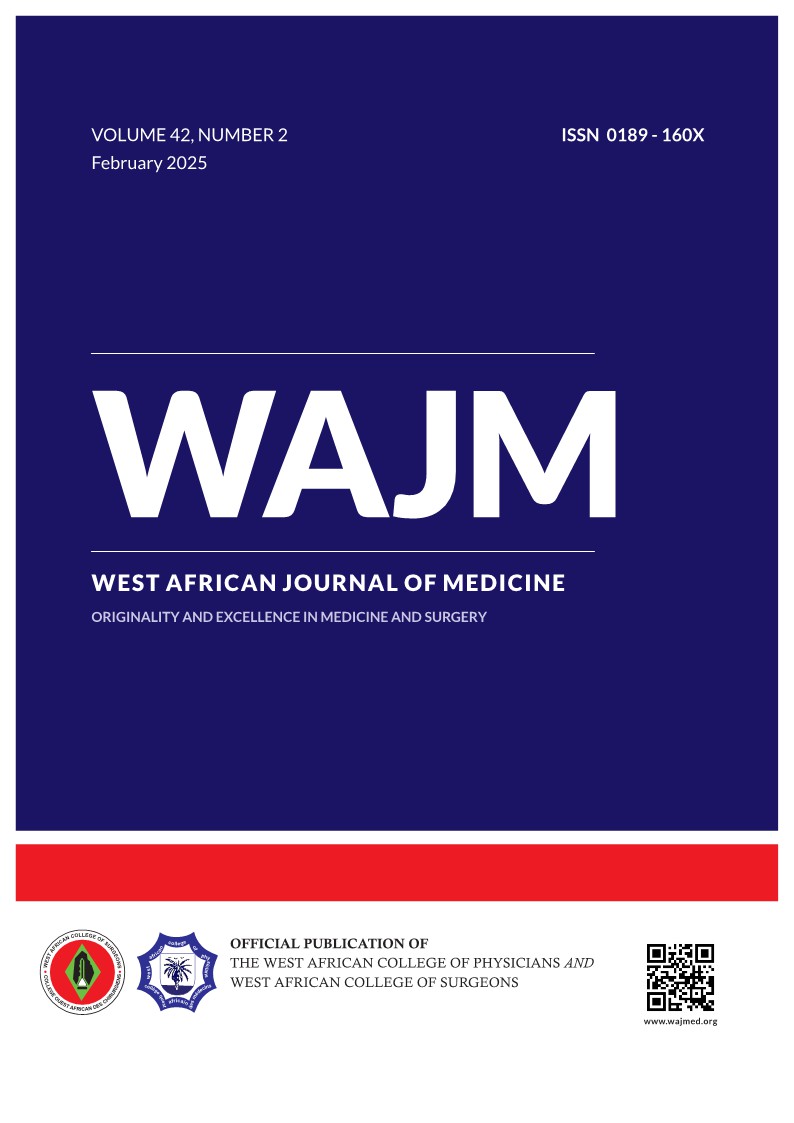ORIGINAL ARTICLE: Programmed Cell Death Ligand 1 (PD-L1) Expression in Triple Negative Breast Cancer Cases in Benin City
West Afr J Med February 2025; 42 (2):97-103 PMID: 40618380
Keywords:
Breast carcinoma, mmune checkpoint, PD-L1 inhibitor, Triple-negative breast cancerAbstract
Background: Triple-negative breast cancers (TNBC) have been particularly challenging to manage due to their lack of intrinsic cellular receptors and a consequent lack of targetable therapy. Recently, the programmed cell death 1/programmed cell death ligand 1 (PD-1/PD-L1) immune checkpoint pathway has become the focus of immunotherapy in general, and especially for TNBCs. This study aimed to determine the pattern of expression of PD-L1 in TNBC cases in Benin City.
Methods: Formalin-fixed, Paraffin-embedded tissue blocks of TNBC cases diagnosed in the Department of Anatomical Pathology, University of Benin Teaching Hospital, Benin City, Nigeria from 1st January, 2017 to 31st December, 2019 were re-sectioned for PD-L1 immunohistochemistry.
Result: Ninety-two cases of TNBCs were tested for PD-L1 expression. Thirteen (14.1%) of the TNBC cases were PD-L1 positive of varying degrees in tumour cells. Diffuse tumoural PD-L1 staining was seen in four (30.8%) of the PD-L1 positive cases. PD-L1 expression was significantly associated with increasing age up to the fifth decade (p =0.030). All the PD-L1 positive TNBCs were invasive breast carcinomas of no special type and mostly grade 2 tumours; however, there was no significant association between PD-L1 expression and histological subtype or grade.
Conclusion: PD-L1 expression was shown to occur at a relatively lower rate among TNBC cases in this southern region of Nigeria, and was significantly associated with increasing age. About 14.1% (1 in 7) of our TNBC patients could potentially benefit from immune checkpoint inhibitor therapy. We therefore recommend further PD-L1 immunohistochemistry assay for TBNC cases and the use of appropriate immune therapy when indicated.


